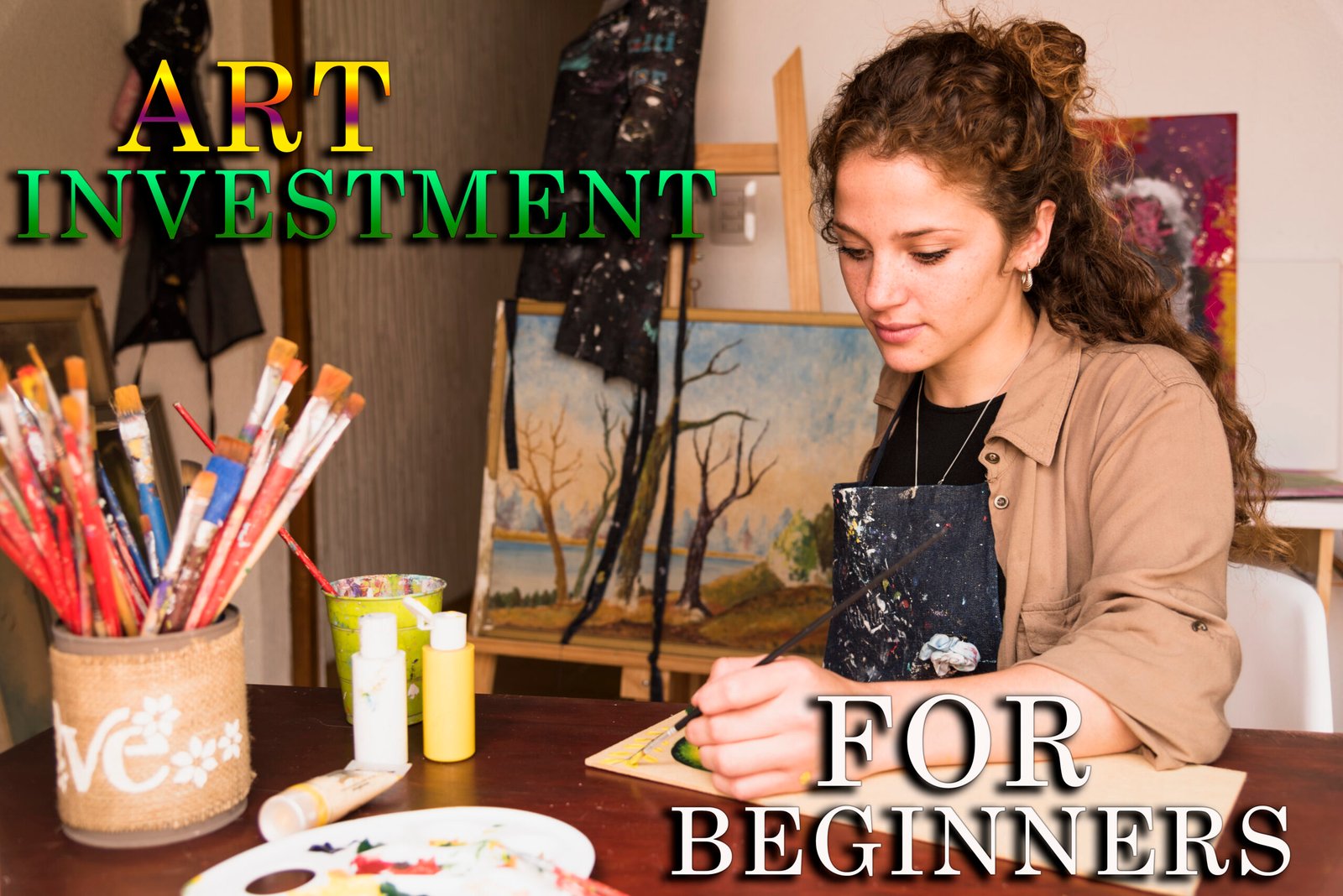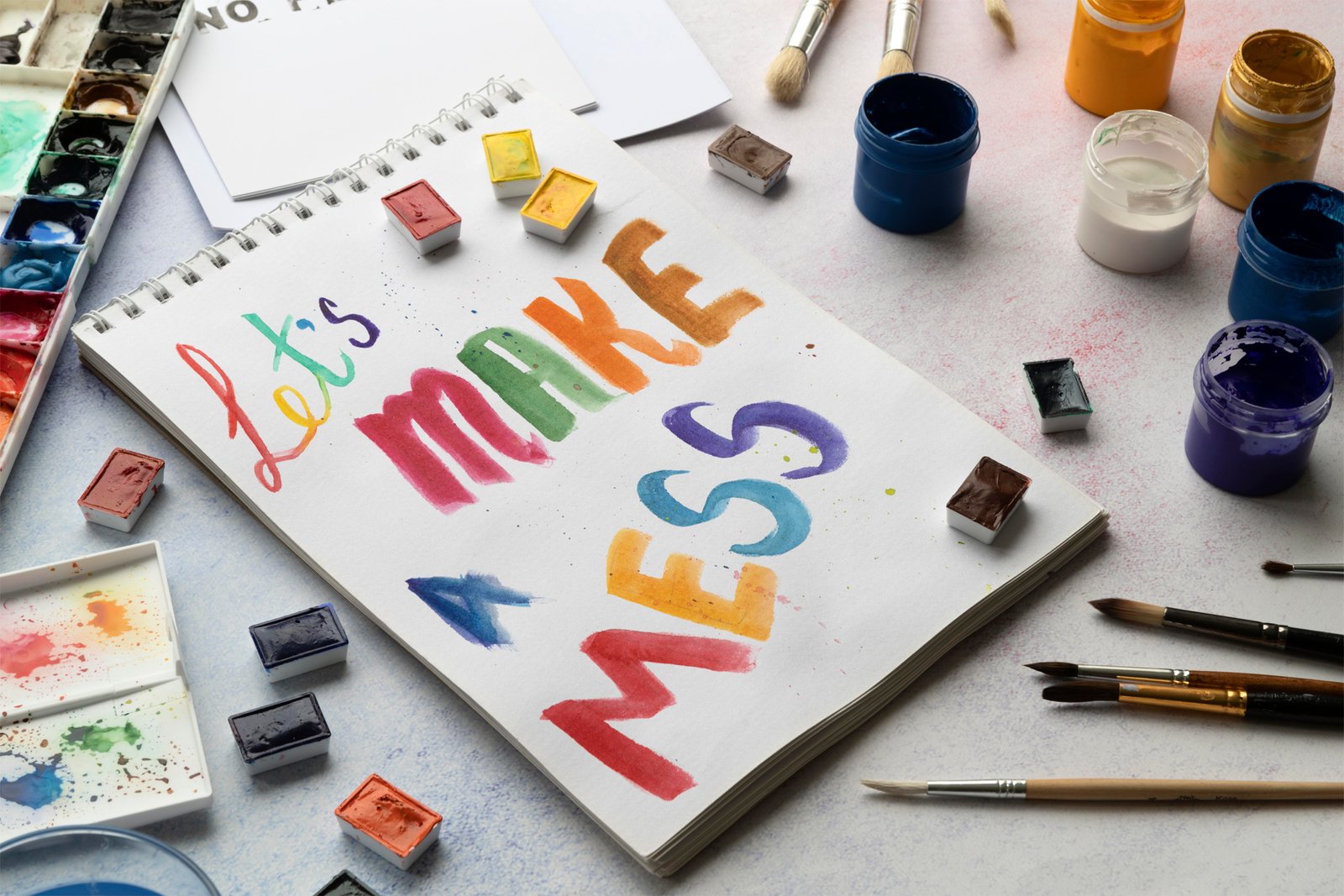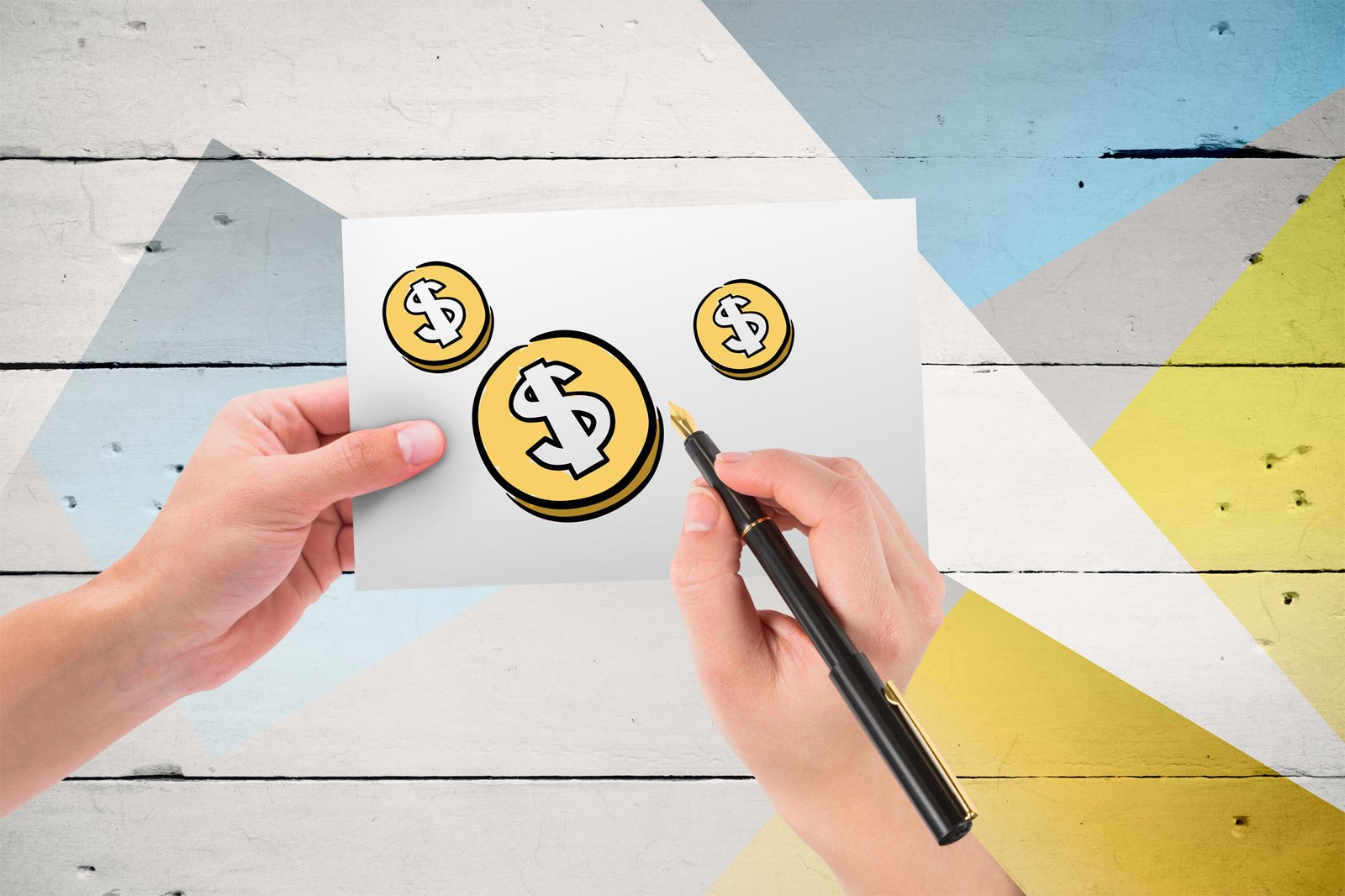This Article will show Art Investment for Beginners in 2025, understanding the Basics of Art Investment, how to Start Investing in Art, and key Art Investment Tips for Beginners. Complete step-by-step guide. Include Advantages and Disadvantages with Frequently Asked Questions and Conclusion.
Art Investment for Beginners in 2025
Investing in art is one of the most frequent forms of portfolio diversification following real estate, bonds, and stocks. Investing in art is daunting as a new player in the market since there are subjectively priced works of art, and the luxury position of galleries and auction houses. But now, with more sites available, art guidebooks, and fractioned sites, acquiring art has never been simpler. This book will guide beginning players in the world of art through step-by-step, systematic, and reliable instructions.
Unlike other investment properties, artwork gives double value—aesthetic and financial. It can be hung on your wall, appreciated over time, and perhaps even grow in value. As either an investor looking to support emerging artists or an investor looking for long-term appreciation, regulated platforms for art investing require an understanding of the market dynamics, players, and investment strategies. Let’s talk about how art investing novices can get started and what to be aware of.
Understanding the Basics of Art Investment
Art investment is an elitist connoisseur- or collector-only business, no more, but more than that is an old-fashioned notion. The purchase of paintings of enduring quality for profit is art investment at its fundamental level. Other investments have long-term appreciation and artistic beauty, so does art. Whether you’re spending less than $500 on a work by an unlisted artist or tens of thousands of dollars on a blue-chip painting, you have to understand the art world’s unwritten rules if you’re going to be making intelligent choices.
Art is only worth what people will pay for it based on the interaction of many independent variables—the artist’s record and reputation, medium, provenance, and condition at sale. Art is not an investment until and unless it happens to sell, and thus is an investment in capital appreciation like stocks and bonds. So you will keep the art for decades and hope against hope that the market value appreciates. And second, the notion that it’s true because of its tactility and emotional resonance—it decorates your home, it’s a conversation starter, and provides a loose estimate of life events or philosophies.
Individuals who enter the market also must be aware of the various segments of the art market. There is classical art, contemporary art, photography, sculpture, and computer art (with NFTs), and each of their respective market drivers. Better-established, longer works by established artists will be safe, but newer artists provide more risk for higher reward. Where to put money would be based on risk tolerance, resources, and interest. Art festivals, online art galleries, and neighborhood shows are all good places to start the search for what’s current and whose career is on the upswing.
Provenance and authenticity follow. Only a traceable and original artwork that is valuable or appreciable is it. Copies and forgeries are rampant, particularly on the internet. Purchase from authorized websites or directly from galleries as a newbie that provide certificates of authenticity. Serious research about sellers, artists, and prices does magic for the security of your investment.
Fractional art ownership has been even more groundbreaking in recent years. Unlike in the past, it now allows investors to buy shares in expensive paintings, just like stocks, without having to buy the entire work of art. Masterworks, Yieldstreet, technology-driven platforms, and certain institutions are offering these fractional interests, thereby making blue-chip art marketplaces accessible to everyone. It solves physical issues of ownership, such as storage, insurance, and maintenance, and hence is a great place to begin for the art newbie.
Finally, art investing maxims are simply passion, research, and planning. Do not dash out and purchase whatever is trendy. Discover the style of art that speaks to your sensibilities, research the artist’s body of work, authenticate the work, and never forget the long holding period. With insight and forbearance as a side job, art investing can be a personalized, good investment and rewarding element of your diversified portfolio, leading to personal and financial enrichment.
How to Start Investing in Art
Investing in art is a snobbish or elitist activity of the affluent or the champions of culture, but the only thing that holds is the fact that it’s a serious and lucrative class of investment, in case you do happen to have the right information. Unlike bonds and stocks, you possess something concrete, at least hopefully something beautiful, a value object that increases in value as it matures. But to participate in the art market is not merely to be aesthetically engaged; it is to know how the market works, what one needs to be willing to pay for, and how to navigate so that one comes to good work of value.
It would begin with learning and research. You would have to learn about the different kinds of art — from painting to contemporary sculpture, prints, and even digital NFTs — and whatever was in vogue at that time. The more you learned, the more you would invest in buying that very first piece of art.
Also, there is a need for the new investors to decide whose name the artwork investment takes. Do you need long-term appreciation, a portfolio diversifier, or do you just want to invest in artists? All will lead you to a different path. Budgeting comes after deciding that.
It also makes sense to be careful regarding liquidity — there may be a lag before being able to sell on a piece of art. Patience is the solution, then. New entrants will try to buy and sell using galleries, websites, or consultants who will offer authenticity advice and value to the transaction.
With your school in your resume, you can transition to other test fairs or media buying and exhibitions to see work first-hand. Fifty-six thousand or a few thousand, it doesn’t matter; the same rule always holds: begin small, stay in control, and think wisely when making decisions in keeping your budget level even.
1. Define Your Investment Goals
Know your purpose ahead of time before you invest—in appreciation of value over time, legacy collecting, or acquiring soon-to-be new artists? Your purpose will direct you as to what art, price point, and holding period on a piece of art you acquire. Having this knowledge will prevent you from emotional, rather than rational, investments. You think and don’t buy on impulse when you know your purpose.
2. Set an Art Budget
Figure out how much of your income or savings you are comfortable spending on art. Whatever that is, whether it is $500 or $50,000, what you can afford to spend will decide whether you can afford a print, limited edition, or original. Spend no more than any other risk-adjusted investment. Budgeting will also enable you to compare values between pieces.
3. Learn About Different Types of Art
From painting and sculpture to NFT and mixed media, the media vary. It will be wise to know what yours is and how its value appreciates so that you apply caution where you spend. Some appreciate more reliably than others, and they all present different issues of conservation and storage. Be well-researched so that you do not break your arm and leg, making costly mistakes.
4. Observe Primary vs. Secondary Market
The primary market is the original artwork on sale initially by the dealer or artist. The secondary market is resale, typically by auction houses or collectors. Prices, demand, and supply may all be entirely different in either of these markets. Provided you get an idea of where your artwork belongs, you can approximate its value someday.
5. Attend Art Fairs and Galleries
First-hand viewing of the paintings toughens your eye for style and quality. They also allow you to meet artists and curators and gain insider information. Local art shows or global art fairs acquaint you with the mood of the market. This is also a great networking choice for beginners.
6. Check Artist Reputation and Provenance
Research the artist’s background, his/her past shows, and past sales. Provenance—a track record of ownership shown through some documentation—is enhanced in value and authenticity. Avoid authentication-free art with no authentication history. Documented art is better to sell and gives buyers greater assurance.
7. Find Online Art Marketplaces
Sites such as Artsy, Saatchi Art, and Masterworks provide pre-market exposure for artworks globally. They will generally provide the price, artist details, and secure payment. Sites also provide easy comparison of artworks. Ensure that the site provides return and authenticity warranties.
8. Research Emerging Artists
Investing in new artists can be low-cost with high returns. Seek out those who are barely starting to become ginormous on social media, gallery exhibitions, or have just received awards. Their paintings or work will increase in value proportional to their popularity. It’s an astute method of being able to start a collection at perhaps a budgetary cost.
9. Start with Limited Editions or Prints
Signed, limited edition prints are not only affordable without sacrificing future value but also ideal for new purchasers. They are easier to insure and store, and some will increase in value over the next couple of years. Use lower print run editions to incorporate that special touch of uniqueness.
10. Keep Documentation and Ensure Your Art
Always store invoices, certificates of authenticity, and provenance details safely. These documents prove ownership and support resale. Ensure your art against theft, fire, or damage to protect your investment. Insurance also reassures buyers during future transactions.
Key Art Investment Tips for Beginners
Having found the art market secret, step two is having the ability to grow and mature your value investment. Beginners are shocked at how convoluted art valuation is, how trend-influenced it is, and how networking with other art buyers impacts their bottom line. Understanding a small measure of what to buy in the first place can avoid costly blunders and make your experience emotionally and financially rewarding.
Art, being unique from other investments, can never be quantified. Popularity of artists, popularity of societies, popular culture, and even world events may influence demand and price. New buyers, therefore, must learn in the case of market trends and take their positions on reasoned observation and not want.
Timing comes into play when you are purchasing as well. While there’s always going to be some emotional stake in the artwork, you need to be able to differentiate between being in love with it and investment planning. You don’t necessarily need to purchase it because you’re in love with it, or not, either.
It can’t be worse to be well-loved by dealers, curators, and other investors, of course. The better you understand the art market, the more informed your decisions will be and the more insider knowledge you can call on. You will know when to sell or trade off due to market pressure as well.
A decent record-keeping technique, value monitoring, and risk analysis constitute a decent art investment plan. All these need to be taken into consideration in an attempt to devise a portfolio that will balance out in the long run and carry you through to your long-term financial goals.
1. Research Before You Buy
Do your price research, artist popularity, and art market research before spending your hard-earned cash. Study auction house reports, online databases, and art blogs. Knowledge is power and reduces your odds of overpaying. The more you know, the better your decisions.
2. Don’t Buy with Emotions
It is entirely possible to fall in love with a stunning piece of art, but passion can never precede valuation. Consider the artist’s record, resale, and demand in the market. If there are no or little chances for an artwork to increase in value, consider otherwise. Investment art needs outstanding, solid sound long-term value.
3. Keep Track of Market Trends
Observe what is trendy in art or among artists. Art trends trend socially, politically, and culturally as well. Observe the art galleries and the art auctions and observe what is trendy these days. An early probe on trendy categories will yield golden results in the next few days.
4. Be Friends with Art People
Schmoozing with gallerists, curators, and consultants acclimatizes one to off-the-record sales and insider tips. They can tip one for undervalued works of art or a pre-opening preview of the limited edition. A rapport facilitates one getting negotiation and authentication done with less effort.
5. Diversify Your Art Portfolio
Never put all your eggs in one basket or one artist. Go in and out of medium, style, period, and geography. Diversification reduces risk and increases potential for long-term growth. Diversification reacts to market movement like investing in finance.
6. Provide Proper Art Storage and Care
Art cannot be put into a specialty room where it can be useful and won’t be destroyed. Keep it out of the sun, heat, and water. Get it professionally rolled, wrapped, and framed in acid-free wrappings. Storing it like this makes the art cheaper and murders resale value.
7. Know When to Sell or Hold
Keep an eye on your portfolio and balance whenever needed according to market or individual objectives. Sell when there is excessive demand for an artist. Procrastination is risky when demand falls. The timing of entry needs to be just right while trying to maximize return.
8. Let Technology Be Your Value Watcher
There are even websites like Artprice, Artnet, and MutualArt that give you valuation data and trend analysis. They allow you to establish price trends, auction records, and comparable sales, where you can negotiate shrewd buys and sales. It is very important to remain updated as it keeps appreciation current.
9. Buy Art Insurance
Accidents and catastrophes will happen — protect your investment against them with insurance from an expert. Cover can be arranged for damage, loss, or transit risk. Insure for value at time. It is well worth paying a small premium to have peace of mind in the future.
10. Stay Up to Date with Art News and Auctions
Follow social media, art blogs, and magazines. Get on gallery or auction house mailing lists. Knowledge and preparedness mean understanding what is available and what’s current. Understanding is not only lucrative but also fulfilling in a transitional market that is changing.
Benefits and Drawbacks of Art Investment
Benefits:
- Portfolio Diversification: Art is not correlating in value with real estate or equities. During an economic downturn, art is a non-correlating asset, which one can utilize in trying to diversify an investment.
- Tangible Asset: Art is a tangible asset which one can employ day after day. During a global recession, it is an asset which provides emotional value by the sense of sight that just isn’t provided by paper assets.
- Long-Term Appreciation: Art, particularly that of lesser-known or up-and-coming artists, has the potential to appreciate to crippling price levels in the long term.
- Social Status and Relevance to Culture: Buying art can raise an individual’s social standing above that of being capable of attending the art exhibitions and VIP previews.
- Inflation Hedge: Fine art has consistently performed well in periods of inflation, thus making it a good store of value.
Drawbacks:
- Illiquidity: One is not so readily able, nor so cheaply able, to sell a painting as to sell stock. It can take several decades to sell, and the cost of sale is prohibitively expensive.
- High Entry Points: Fine art is costly, but fractional ownership is still attainable for a relatively modest outlay.
- Market Volatility: Trends in art shift so quickly. The gold artist of the week is not necessarily the gold artist the next week. Aside from that, there are several other hazards involved with investment in art.
- Storage and Maintenance: Fine art has to be stored for it to retain its same value and condition, and that can even come at a higher price.
- Risks of Counterfeiting and Authenticity: There are numerous replicas and reproductions floating around for sale. You can be duped if you are a beginner.
Frequently Asked Questions:
Q: How can I invest in Art if I have a tight budget?
Yes. Now you can buy fractional shares on most sites, so you can buy blue-chip art for $500.
Q: What is the best way to ensure the artwork will appreciate?
No such assurance is available, but an artist’s record, sale at auction, media, and pattern of demand are some likely giveaways.
Q: Do I have to buy art over the Internet?
Internet giveaways are a suitable starting point. Look for sites providing certificates, open prices, and seller ratings by real buyers.
Q: Do I buy art during a depression?
Yes, occasionally. Fine art will retain its value or even grow in a recession, but new art is speculative.
Q: What do I do if I must sell something in a hurry?
Art is extremely illiquid. Resale will be quick, but perhaps at a discount. Resale websites and auction houses can assist, but in the medium term.
Conclusion:
Art collecting is an odd hobby that entails fantasy, culture, and commerce. Although it may be induced with inherent risk like any investment discipline, it has certain strengths, economic and psychological. While becoming more valuable, expert counsel and study material, new entrants to the world of art today have a smooth induction. The mantra is to observe, wait, and inquire. Start with what interests you, learn, authenticate, and keep your collection as an investment for the long term. A very highly educated patient, fine art can be a good and positive contribution to your portfolio.
References:
- A Beginner’s Guide to Fine Art Investment (Quantus Gallery)
- How to Start Investing in Art (Masterworks)
- Investing in Emerging Artists (Saatchi Art)
- How to Evaluate Art as an Investment (Artsy.net)
- The Risks of Investing in Art (Investopedia)








1 thought on “Art Investment for Beginners in 2025 | Best Navigating the Market”